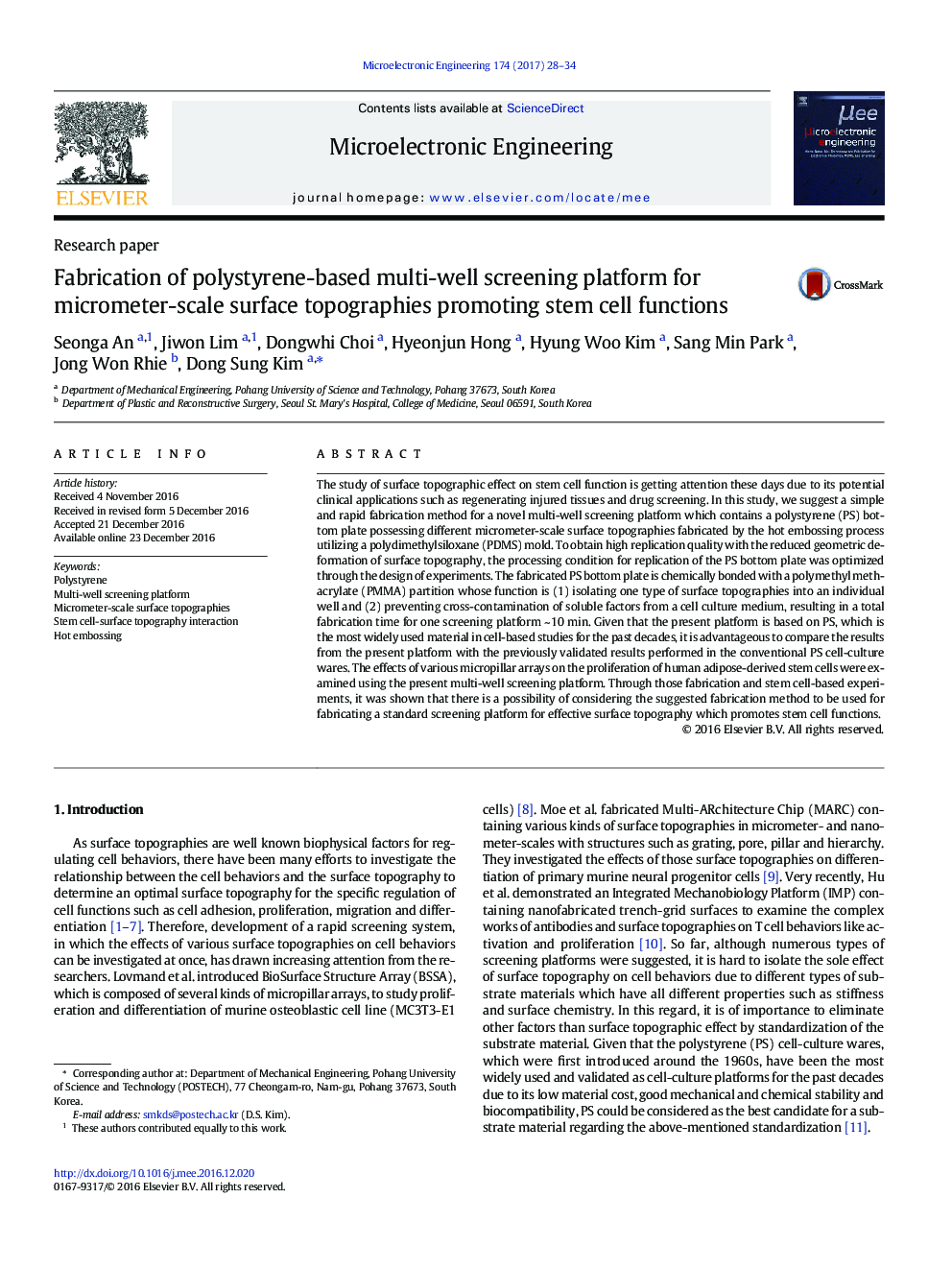| کد مقاله | کد نشریه | سال انتشار | مقاله انگلیسی | نسخه تمام متن |
|---|---|---|---|---|
| 4970898 | 1450307 | 2017 | 7 صفحه PDF | دانلود رایگان |
- The polystyrene based multi-well screening platform with micrometer-scale surface topographies is fabricated.
- Hot embossing is used for simple and rapid fabrication of screening platform.
- The effect of processing parameters on replication quality is studied with the help of Taguchi method.
- The screening of surface topographic effect on proliferation of human adipose-derived stem cells is carried out.
The study of surface topographic effect on stem cell function is getting attention these days due to its potential clinical applications such as regenerating injured tissues and drug screening. In this study, we suggest a simple and rapid fabrication method for a novel multi-well screening platform which contains a polystyrene (PS) bottom plate possessing different micrometer-scale surface topographies fabricated by the hot embossing process utilizing a polydimethylsiloxane (PDMS) mold. To obtain high replication quality with the reduced geometric deformation of surface topography, the processing condition for replication of the PS bottom plate was optimized through the design of experiments. The fabricated PS bottom plate is chemically bonded with a polymethyl methacrylate (PMMA) partition whose function is (1) isolating one type of surface topographies into an individual well and (2) preventing cross-contamination of soluble factors from a cell culture medium, resulting in a total fabrication time for one screening platform ~Â 10Â min. Given that the present platform is based on PS, which is the most widely used material in cell-based studies for the past decades, it is advantageous to compare the results from the present platform with the previously validated results performed in the conventional PS cell-culture wares. The effects of various micropillar arrays on the proliferation of human adipose-derived stem cells were examined using the present multi-well screening platform. Through those fabrication and stem cell-based experiments, it was shown that there is a possibility of considering the suggested fabrication method to be used for fabricating a standard screening platform for effective surface topography which promotes stem cell functions.
122
Journal: Microelectronic Engineering - Volume 174, 25 April 2017, Pages 28-34
